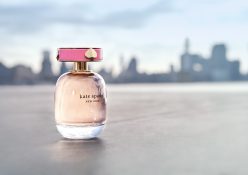Most of us start some form of a skincare routine as teens, with spots emerging, oily t-zones and experimenting with make-up. it’s important that our routine adapts with our age, supporting our skin as we move through life. We’ve simplified things into bite-sized age brackets to give you all the need-to-know info on keeping your skin glowing and healthy through the ages.
20s
As we move from our teens into our 20s, most of us are still fighting breakouts, although hopefully they have began to subside by now. While expression lines start to stay around a little longer than we would like, deep lines are not yet a problem. Preventative beauty habits such as drinking plenty of water and taking supplements can help combat the skin damaging effects of a twenty-something lifestyle. A lot of partying and late-night takeaways, sound familiar?
Things to do now
Prevention is better than cure, especially when it comes to your skin, so make sure to protect it from the sun. It’s a known fact that the sun ages and damages our skin. Make it a priority to cover your skin in peak sun hours and always wear an SPF – you will be so grateful in your 40s if you adopt this simple habit now. Keep your body and skin well hydrated and add a hydrating moisturiser into your skincare routine. Our skin is rejuvenated while we sleep so get into the habit of removing your make-up every night before bed, no matter how many margaritas you’ve knocked back. While they’re fine to use as a pre-cleanse or to remove make-up, don’t make using wipes as a cleansing solution become a habit of. Rather cleanse your skin properly with water and a cleanser. If you don’t already, now is the time to start exfoliating: It rids the surface of your skin of dead skin cells that coat your skin and block pores, leading to black heads and dull-looking skin.
30s
With high-flying careers, and maybe children arriving on the scene, things are a new kind of hectic as we move through our 30s. Lack of sleep and stress may all be things we have to combat in our skincare routine. Our skin begins to dry out and things such as fine lines and pigmentation start to show up, so our routine needs to turn things up a notch to meet these new needs.
Things to do now
It’s time to introduce an anti-ageing night cream, while continuing with our already established good skin habits. You should also increase exfoliating to 2–3 times a week to remove dead skin cells and maintain healthy glowing skin. Look for a moisturiser that contains antioxidants such as vitamin C to fight the signs of fatigue and, of course, keep applying that SPF. Introduce retinol a few times a week. Retinol is a concentrated form of vitamin A that helps rev up your skin’s collagen production – something you will be noticing is on the decline in your 30s. If you aren’t as diligent with your diet as you would like to be, supplement with omega-3 fish oil, which helps to fight wrinkles and slow the process of aging.
40s
In your 40s, every sign of ageing seems to appear with pigmentation possibly worsening and overall loss of elasticity particularly around the eyes, so fully fledged slowing of ageing is necessary. High oestrogen levels equal glowing skin, but around 40 your oestrogen levels begin to drop, so expect the luminosity of your complexion to go down. As collagen decreases, fine lines may appear to be more firmly etched in to the skin than before.
Things to do now
If you are using a foam or gel cleanser, switch to a cream cleanser now and make sure it is hydrating. In your 30s you could get away with a skin treatment only at night, but in your 40s you need extra protection all day, something such as a serum with ingredients that work all day long. Your 40s is a good time to start using face oils as your skin will now be producing less and less oil, and why not incorporate a short face massage while applying it to give your skin extra tone too. Oils are lipophilic meaning they can penetrate deep into the skin, trapping water and other moisture.
50s+
With collagen and skin elasticity on the decline, the inevitable skin sagging begins to happen. Oestrogen levels plummet with the onset of menopause, making the skins ability to protect itself and maintain hydration levels weaker. If you’ve had a healthy skincare routine in place, you may be lucky enough to see minimal effects on your face.
Things to do now
It’s time to improve your at home skincare routine. Use a gentle cream cleanser that helps protect the moisture balance of your skin. As your skin slows down oil production even further in your 50s, switch to oil-based everything. It’s important that you avoid anything soap-like that will rob your skin of precious moisture and oil. Brown spots might start appearing in your late 50s, so have regular checks done to ensure they are benign and use a serum that targets skin discolouration and dark spots. Although you don’t need to buy a separate neck cream, remember to apply your moisturiser past your jawline onto the delicate neck area.
Words: Jade Leggat-Smith | Photography:





